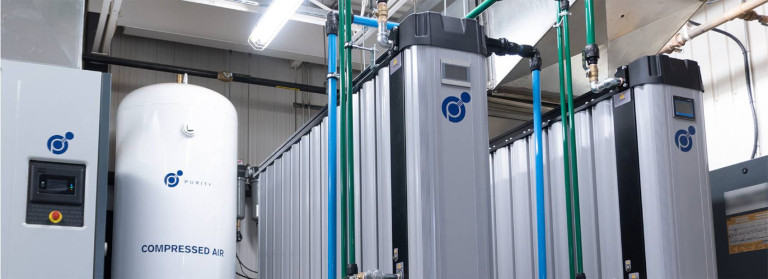The very definition of “efficient” is achieving maximum productivity with minimum wasted effort or expense. Nitrogen gas generation is the efficient approach to supplying manufacturing processes with the gas they require. The efficiency of a nitrogen gas generation system can be refined by optimizing ancillary equipment, operating set points and the applying appropriate generation technology.
Nitrogen Gas Generation Efficiency
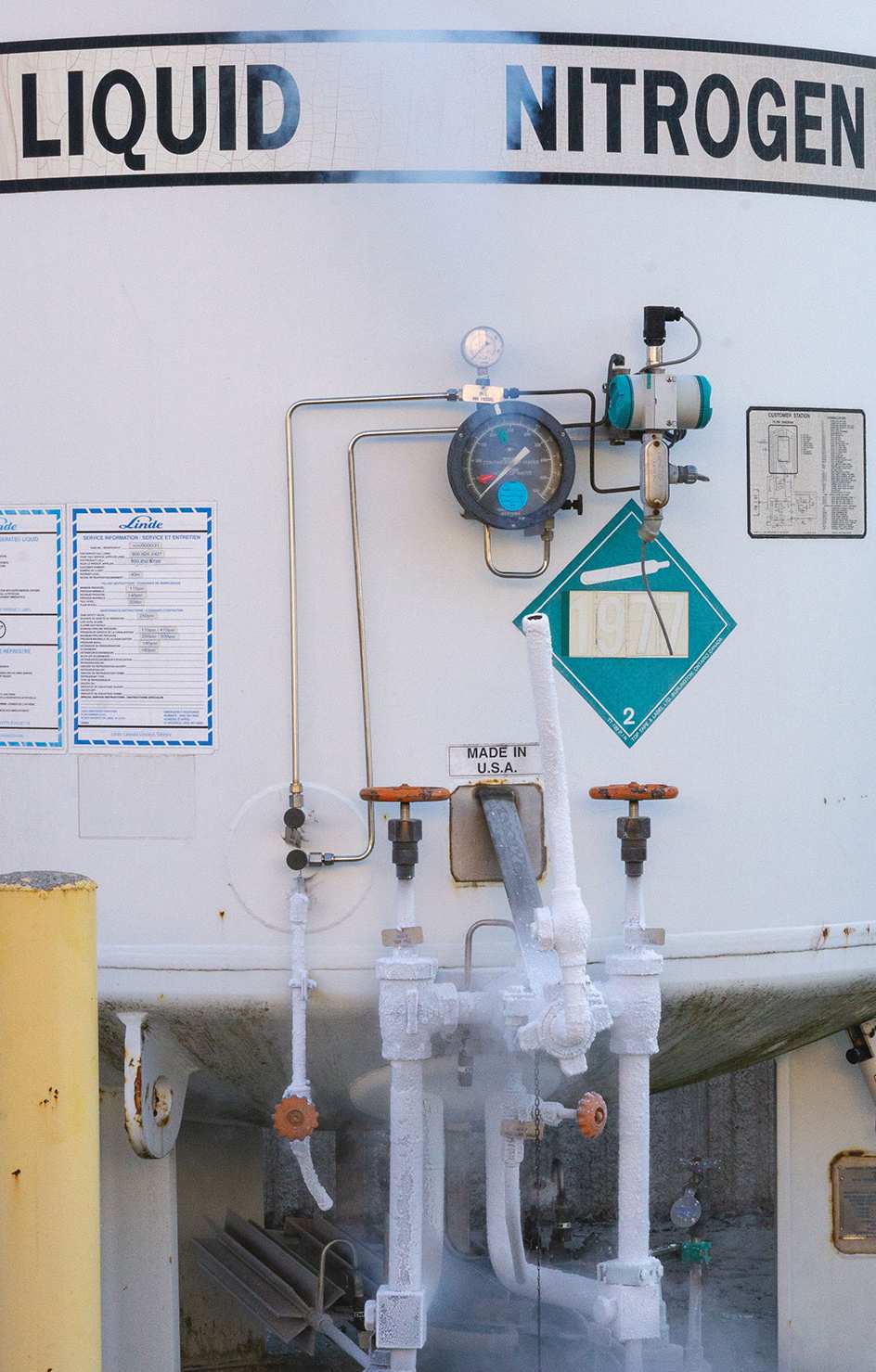
There are many manufacturing processes which use nitrogen due to its chemical properties as an inert gas and because of its abundance in our atmosphere. Nitrogen gas is used to prevent oxidation, as an inhibitor of explosions, used as a propellant gas for aerosol cans and other applications. The nitrogen can be extracted from the air we breathe by the fractional distillation of liquefied air or by adsorption via a separation medium.
The fractional distillation of liquefied air is a process in which air has to be cooled beyond -200 °C and then re-heated to extract the different elements based on their boiling points. This process requires large amounts of energy and can only be done on a large scale to be economically viable.
One of the other methods to extract nitrogen from the air is to adsorb the oxygen and trace gas molecules by a separation media called carbon molecular sieve. The carbon molecular sieve is a porous material which adsorbs the smaller air molecules and allows the larger nitrogen molecules to pass through the system. The adsorption process requires compressed air, which is readily available in most manufacturing facilities.
Efficiency is the Name of the Game
We live in a world where everything has to be done better, faster and cheaper in order to stay competitive. One of the benefits of on-site nitrogen generation by adsorption is the significant cost savings accrued by efficiency. On-site generation completely eliminates the delivery of gas by transport trucks and the gas lost in the storage process. The main driver of cost for on-site nitrogen generation is the energy consumed to compress air.
High efficiency, variable speed air compressors produce stable pressure and use less electricity by matching the speed of the main drive motor (and air compression speed) to the varying demands of production. The efficiency of an air compressor is defined by the specific power which is a measure of how much energy (kW) is used to produce 100 scfm of compressed air. The typical range for these air compressors ranges from 17-21 kW/100 scfm.
The amount of compressed air used in nitrogen generation is also dependant on the sizing of the nitrogen generation modules. When designing a nitrogen generation system, it is imperative to meet the maximum demand while being able to meet the average demand efficiently. This can only be achieved by having a multiple bank system because the nitrogen generators run efficiently at full load. The nitrogen generators which use carbon molecular sieve undergo a process called pressure swing absorption, which is constantly purging regardless of usage when online.
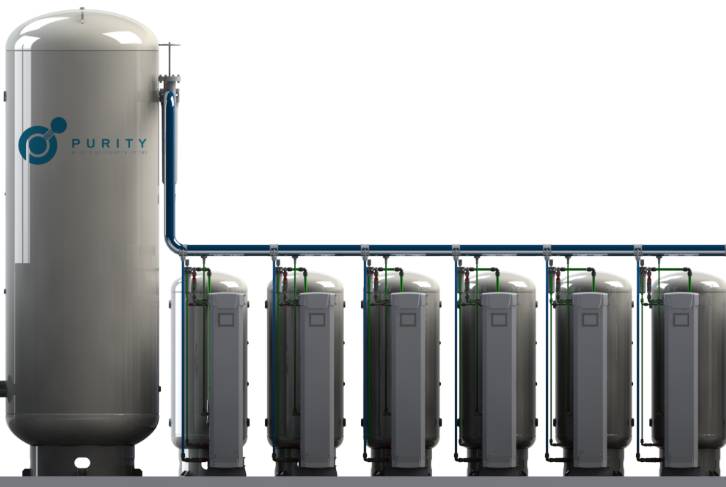
Air-to-Nitrogen Ratio and System Efficiency
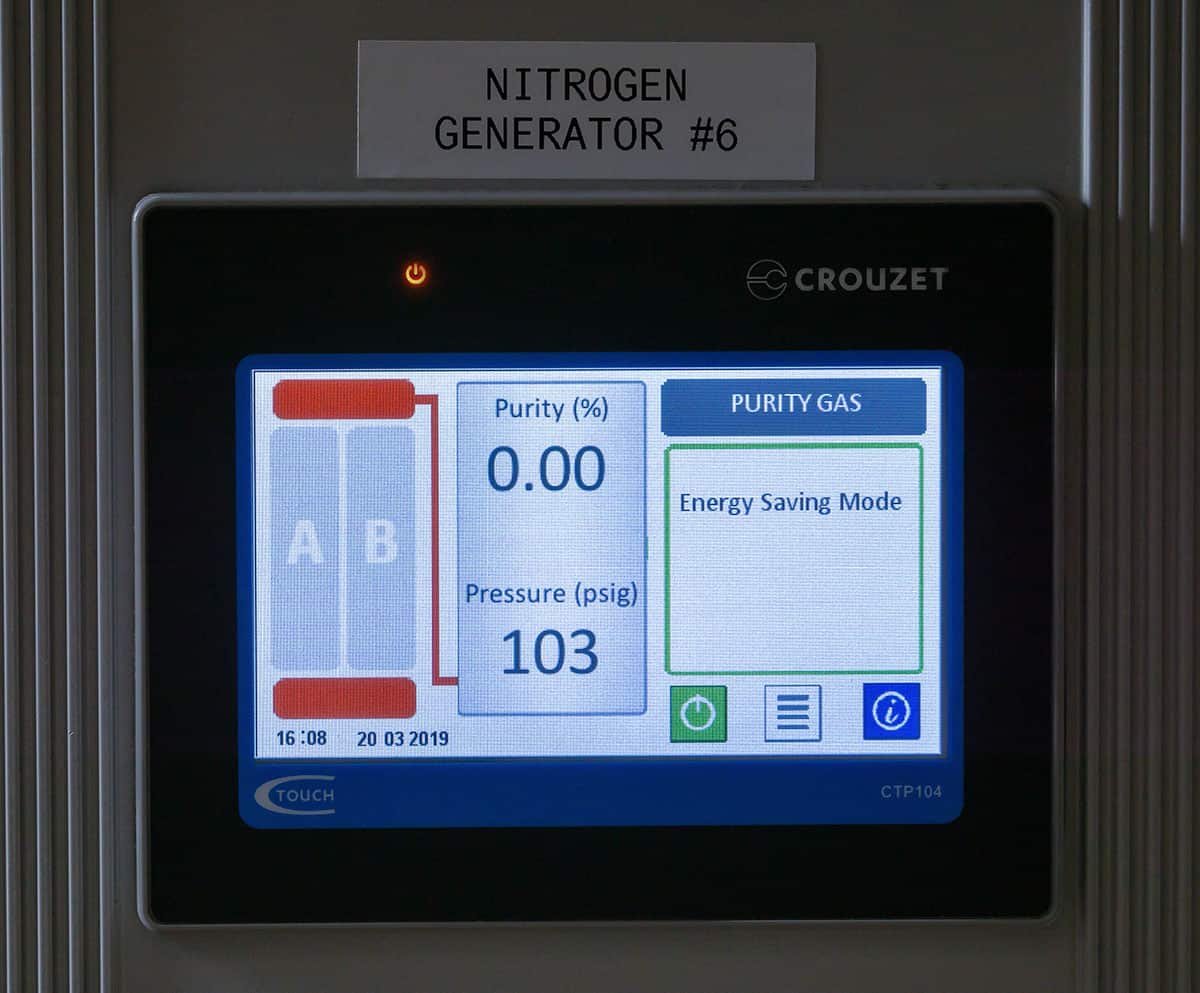
A commonly used analogy is that “you cannot control or manage something which you do not measure”. The measure for nitrogen generation efficiency is the air-to-nitrogen ratio. It is the correlation between the amount of input compressed air required to produce a specified output of nitrogen gas. This ratio varies based on the purity of nitrogen gas required. The purity is dependant on the contact time between the compressed air and the carbon molecular sieve. Therefore, higher purity applications require more input air flow.
The air-to-nitrogen ratio is also affected by the partial loading of generators. When using a multiple bank system, each bank can be programmed to come online based on a set of cascading pressure bands. System efficiency is further enhanced with the economy mode. Each generator continuously measures the nitrogen outlet pressure and when the outlet pressure reaches a set-point for five minutes, the generator will automatically close the nitrogen outlet valve and stop supplying gas.
Self Reliance
When dissecting a manufacturing process for the sake of finding efficiencies, reliability should also be considered because downtime greatly affects overall production output. Nitrogen generators are very reliable because they don’t have many moving parts and are therefore very simple machines. With that said, all machines require inspections and routine maintenance. Having a multiple bank nitrogen generation system creates some redundancy and also allows technicians to perform routing maintenance without shutting the whole system down.
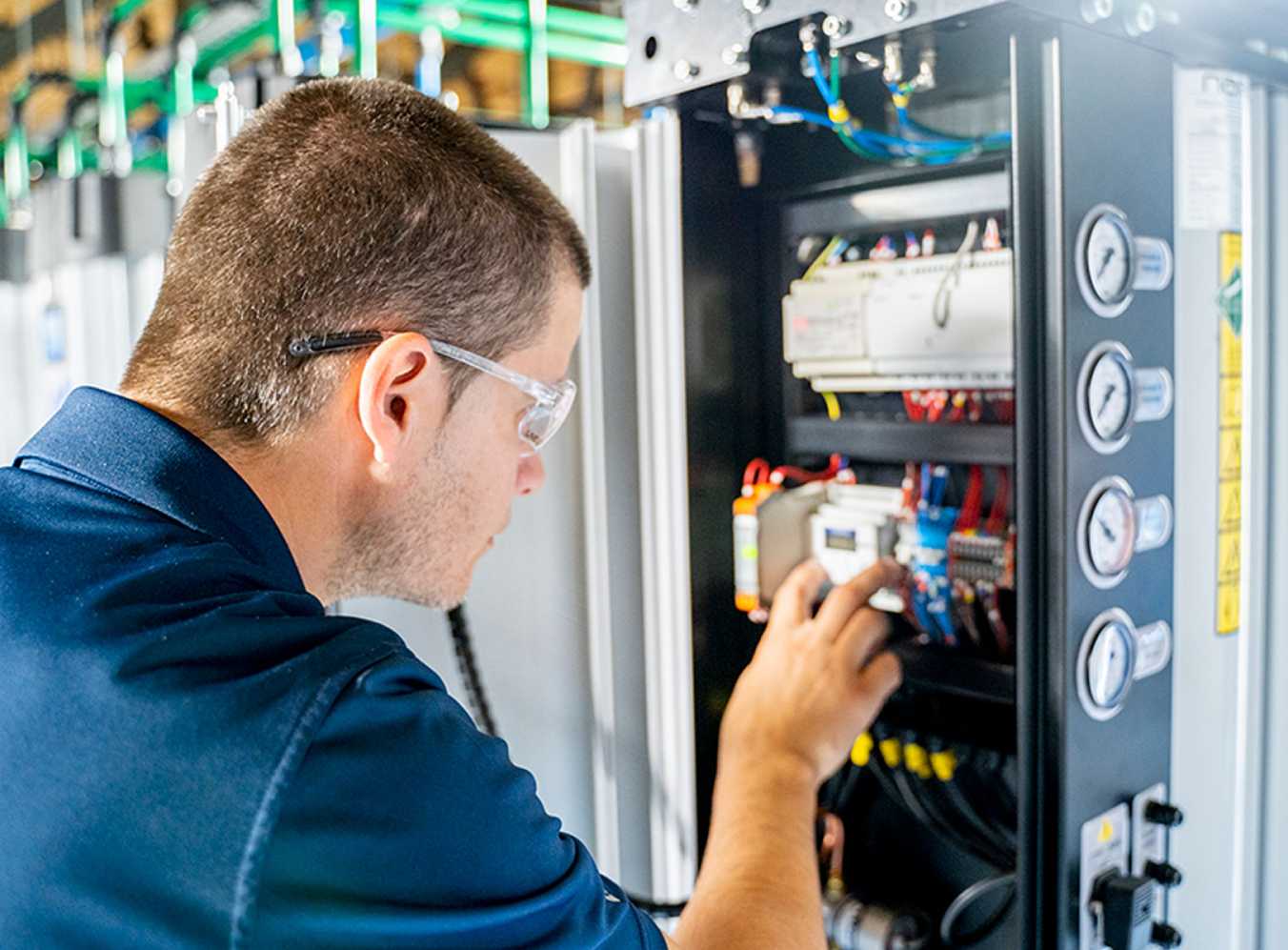
Unexpected down time can be reduced by looking at a process and identifying all the critical points. Relying on external contractors creates risk in the process. This could be something as simple as a missed delivery, weather conditions affecting delivery or even a shortage of delivery drivers. Eliminating these factors will directly affect overall production efficiency in the long run.
Please contact us for more information regarding nitrogen gas generation efficiency, nitrogen usage audits and system design.
 by Dalvir Jandu, P.Eng.
by Dalvir Jandu, P.Eng.
